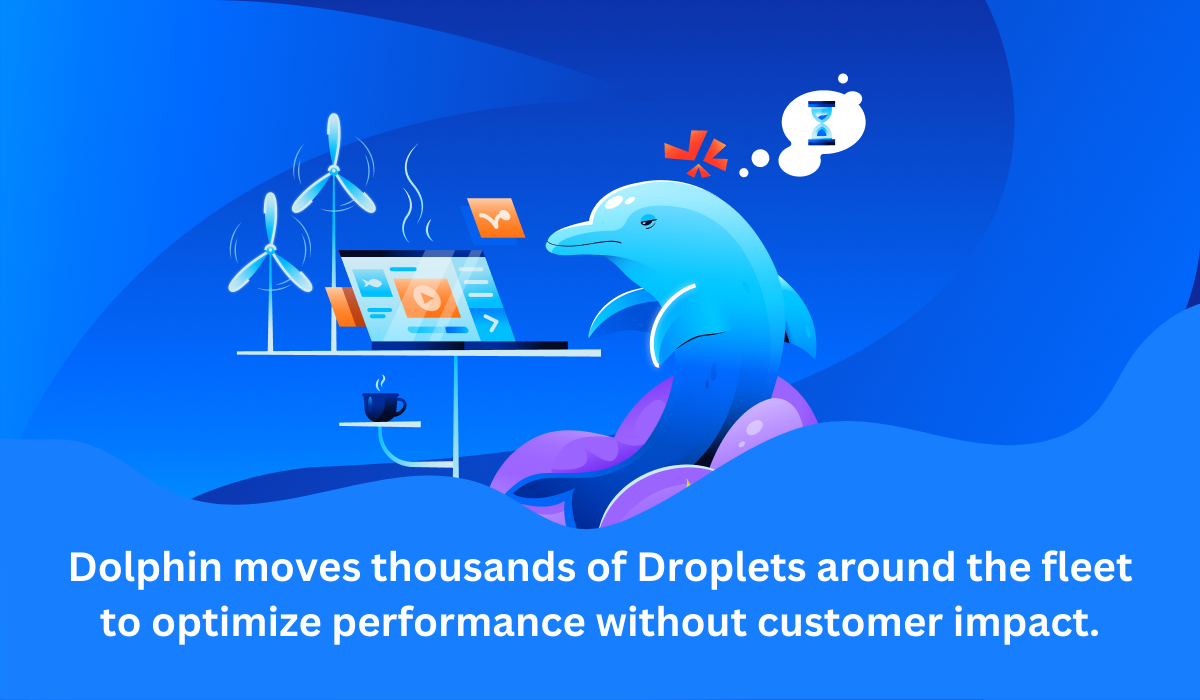How We Implemented the Dedicated Egress Feature on App Platform
App Platform is DigitalOcean’s Platform-as-a-Service solution—we handle the infrastructure, app runtimes, and dependencies, so that you can push code to production in just a few clicks. We recently launched Dedicated Egress features for App Platform, which allows users to route outbound app traffic through a fixed public IP that is not shared by other App Platform users or apps. This addresses a few common concerns by allowing users to:
- Create an ingress firewall rule (IP allow-list) to admit traffic from your app and your app alone. It’s generally considered best practice to secure resources (e.g. databases) by using a firewall rule to deny all incoming traffic unless it comes from a trusted IP address.
- Configure IP address-based rate limit in third-party applications.
In this blog post, I’d like to share how we implemented the Dedicated Egress feature on App Platform.
Motivation to build Dedicated Egress
Before we get into how we built Dedicated Egress, let’s review the basics of IP networks and why we wanted to build this feature. When you access any content on the internet — for example, dessert recipes — the information exchanged between your browser and the server hosting dessert recipes is broken up and sent as many small pieces of information called packets.
These packets have a source IP address and a destination IP address that determine which device within a network sent a packet and where the packet should be routed. During a packet’s journey between client and server, its source IP address can change as it travels between networks. The source IP address is a public IP when the packet is sent between two internet-connected networks. When this blog post mentions source IP addresses, we’re referring specifically to the public source IP of packets sent across the internet.
Running a bit further with this contrived scenario, you decide to spend less time browsing for dessert recipes and more time making desserts. Your time-saving solution involves running an app on App Platform that automatically downloads and indexes recipes from the internet. Just like internet traffic generated by a browser, app network traffic has a public source IP address. Now let’s understand where an app’s public IP address comes from and the challenges that App Platform users faced prior to this feature.
App Platform runs atop Kubernetes, which means Kubernetes handles the scheduling and management of apps across a large pool of worker nodes. Each worker node in a cluster is assigned its own public IPv4 address. Having a public IP address means the workers can connect to the internet and talk to other internet-connected devices. We call this network traffic “egress traffic” because it leaves the data center hosting an app. When an app is deployed on App Platform, Kubernetes decides where to place that app’s container(s) within the worker pool. Without the dedicated egress feature enabled, the source IP of egress app traffic is the public IP address of the Kubernetes worker running that app instance, shown below.

This presents some security challenges, especially to users who need to connect their apps to firewall-protected resources running outside DigitalOcean.
- App Platform is multi-tenant. One Kubernetes worker node can (and usually does) host several apps that belong to different users. Apps running on a given worker node all share the same public IP address. By opening a firewall rule to admit traffic from an app based on its public IP address, that firewall is open to every app running on a particular worker node. In the diagram above, there are two instances of app 1 running on separate nodes. The public IP for app 1 is shared by app 2 and app 3. An ingress firewall rule that allows traffic from app 1 would allow traffic from app 2 and 3 as well.
- An app’s public IP address is not fixed. When you redeploy an app, its public IP address can change because Kubernetes is likely to schedule that app on a different worker node that has a different public IP address. Users maintaining a firewall would need to update an allow list every time their app is deployed, which is a painful experience. This is also not recommended due to the multi-tenancy reason mentioned above.
We built Dedicated Egress to help solve these problems. By enabling this feature, an app is assigned its own set of fixed public IP addresses that belong solely to the app.
How we built Dedicated Egress
Building out the Dedicated Egress feature required solving two main technical challenges. We needed to allocate public IP addresses and assign them to dedicated egress-enabled apps. Second, we needed to route egress app traffic via these public IP addresses. The source IP of outbound app traffic needs to be the public IP address we give that app.
To solve the first challenge, we arrived at a solution that involves creating Droplets and pairing these Droplets with an app. The Droplet public IPs assigned at creation are used as the dedicated egress IPs that we surface to App Platform users, though the Droplets are hidden away behind this feature. Internally we refer to these as gateway Droplets.

In the diagram above, app 1 has dedicated egress enabled, whereas apps 2 and 3 do not. A packet from app 1 starts its journey in a container. The packet leaves its container and arrives on the Kubernetes worker running that container. The Kubernetes worker checks its routing configuration and determines it should send the packet to a gateway Droplet. Once on the gateway Droplet, the Droplet uses Network Address Translation (NAT) to change the source IP address of the packet to the gateway Droplet’s public IP before sending the packet off to the internet.
Now that apps have their own public IP addresses, we need to configure networking on Kubernetes workers to route Dedicated Egress-enabled app traffic via gateway Droplets. Enter Container Network Interface (CNI) plugins. At the worker level, the container runtime is responsible for creating and deleting individual containers on Kubernetes workers. Container runtimes provide a way to hook into the container lifecycle using CNI plugins.
There are whole blog posts devoted to the CNI plugin pattern, but here’s a one-sentence summary: CNI plugins are used in Kubernetes clusters to bootstrap the networking configuration that allows containers to communicate with each other across worker nodes. This plugin model lets us run some code when containers are added or deleted. In our case, when a dedicated egress-enabled container is created, the CNI plugin creates custom routing configuration to route app traffic through its respective gateway Droplet. Below is a diagram that depicts how our plugin is invoked on a worker node.

Note that app egress is tied to the availability of gateway Droplets. If a gateway Droplet is offline or unreachable, the app could lose its connectivity to the internet. We protect against egress downtime by creating two Droplets per app. When a gateway Droplet is offline, we automatically pivot egress traffic to the healthy gateway Droplet. This high availability solution is also useful for maintenance. We can deploy routine security and operating system updates to gateway Droplets without inflicting egress downtime. If you’re curious why an app has more than one dedicated IP, that’s your answer!
So in a nutshell, that’s how dedicated egress works. There were many side questions along the way, like writing automated end-to-end tests for reliability, adding metrics and automated alerts, integrating with billing, etc. We’re excited to release this feature. If you want to give it a spin, check out the Dedicated Egress IP documentation.
Related Articles

Transforming Data Protection: Unveiling Faster, More Reliable Backups and Snapshots
Jawaad Tariq, House Li, Urchin Colley , Jenni Griesmann, and Archana Kamath
May 15, 2024•5 min read

Dolphin: Mastering the Art of Automated Droplet Movement
Jes Olson, Lucy Berman, and Roman Gonzalez
January 23, 2024•10 min read
